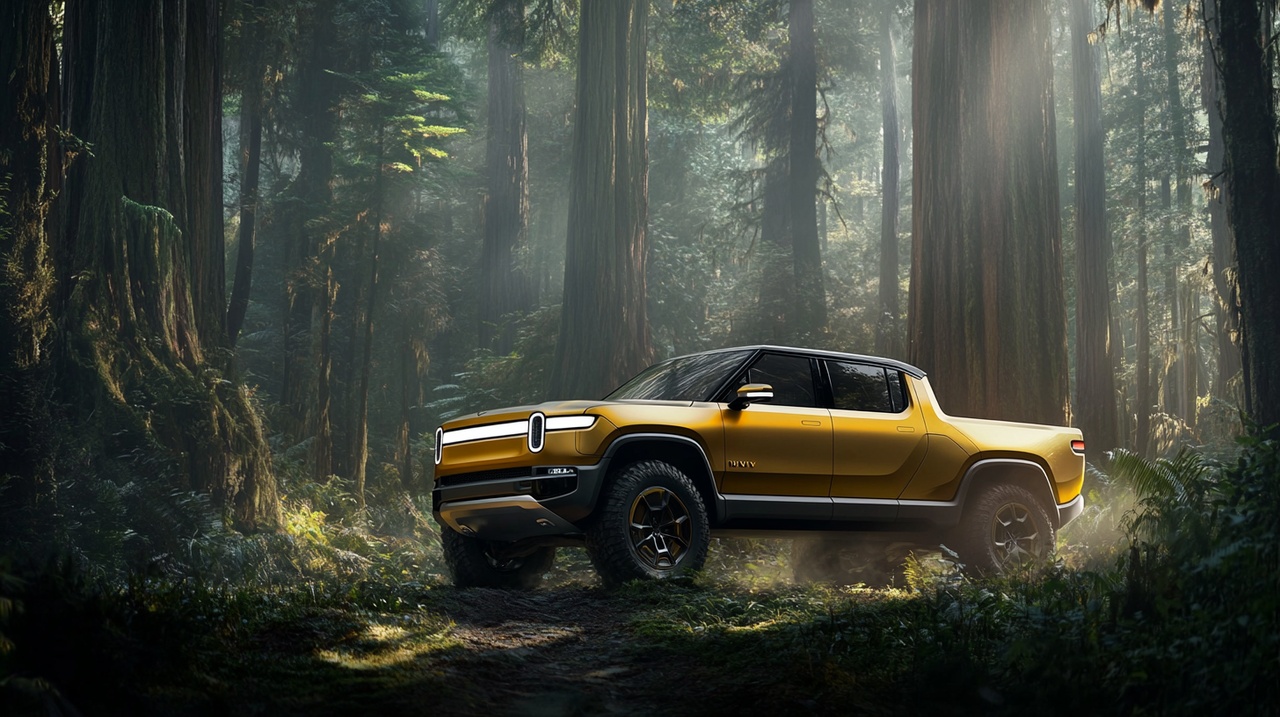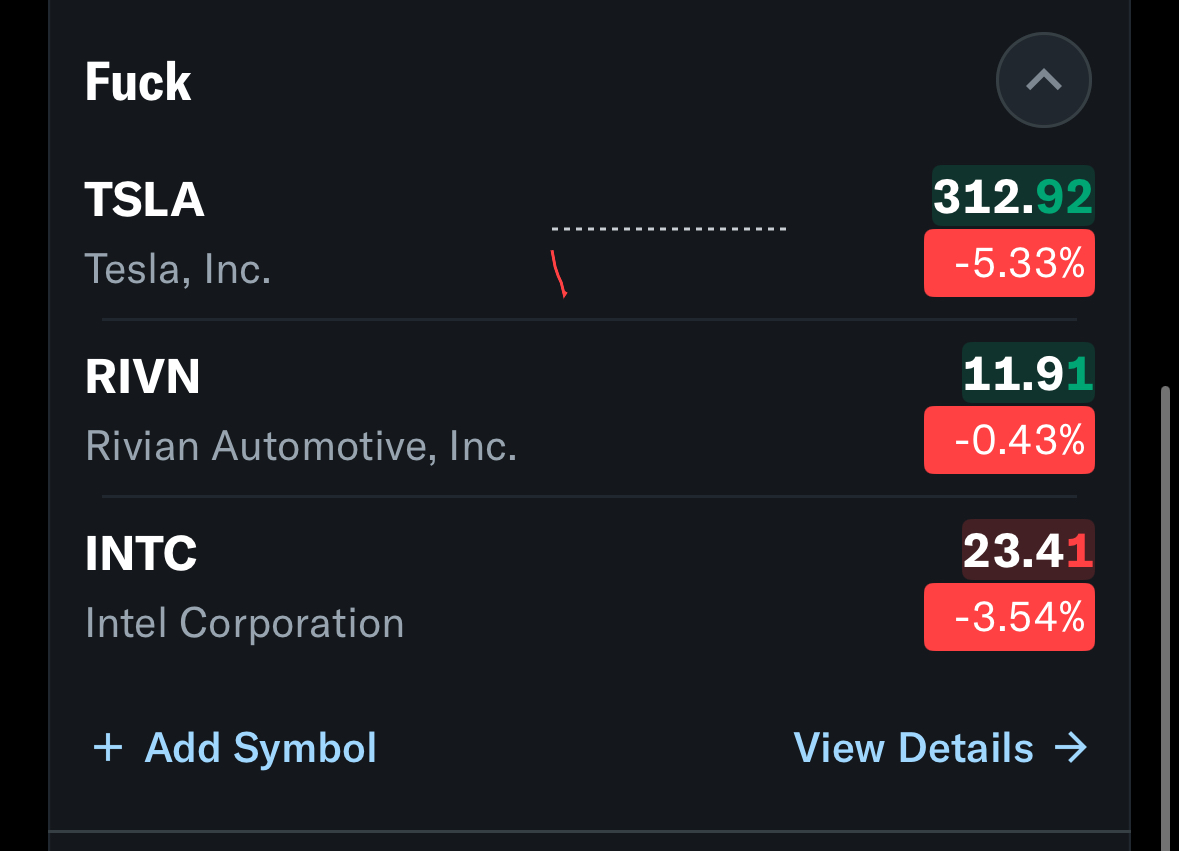Today I am reporting fresh impressions from the Rivian analyst conference ($RIVN (+0,27%)), which I was able to follow as a member of the audience.
Right at the beginning, Murphy focused on the production figures and future plans. He asked whether the 46,000 to 51,000 units targeted for this year for R1 and EDV represented a kind of steady state or whether there was still room for improvement, especially in view of the capacity of the plant in Normal, Illinois of around 150,000 units and the planned capacity expansion for the R23 . Claire McDonough then explained the strategic decision to integrate the first R2 production line at the plant in Normal. This offers considerable flexibility in production. The current capacity in Normal is 85,000 units for R1 and 65,000 for the commercial vans.
An expansion of around 93,000 square meters will create an additional capacity of 155,000 units for the R2, bringing the total capacity in Normal to around 215,000 units. However, McDonough said, not all three lines can run at full capacity at the same time, but the flexibility is there to adjust production between R1, EDV and R2 as needed to maximize overall gross profit potential.
Murphy asked whether the paint shop was the limiting factor for the maximum capacity of 215,000 units and whether there was room for expansion in the future. McDonough confirmed that the paint shop is currently the main limitation. In the second half of this year, a production stop of around one month is planned in order to increase the capacity of the paint shop and prepare the plant for R2 production. In the long term, there would certainly be opportunities for further expansion.
Another important point was the plant in Georgia. Murphy asked about the timeline and capacity. McDonough explained that the Georgia plant would be built in two phases, each with 200,000 units of capacity, for a total capacity of 400,000 units. Construction of the first phase is scheduled to begin in 2026 and production is expected to start in 2028.
In terms of the customer base, Murphy enquired about the current profile of R1 buyers and how this might differ with the potential R2 buyer. McDonough described the R1 customer as very affluent, highly educated and tech-savvy. They appreciated the design, performance and technology of the vehicles. Many are first-time buyers of electric vehicles or enthusiasts looking for a novel product. Interestingly, environmental aspects play a rather subordinate role in the purchase decision; the performance and utility value of the vehicles are more convincing. As for the brand migration from which R1 buyers come, McDonough says this broadly reflects the market shares, i.e. not only premium brands or electric cars, but also many models from Toyota, Ford and GM. A similarly broad mix of switchers is expected for the R2. To increase brand awareness ahead of the R2's launch, Rivian is focusing heavily on experiences and test drives, such as at South by Southwest in Austin, where 7,000 test drives were completed.
An important strategic step is the expansion into Europe. Murphy asked about the plans for this. McDonough emphasized that the R2 was designed for the global market from the beginning and will be the primary product for international scaling. Production is scheduled to start in the first half of 2026 and R2 models will then be exported to Europe, in parallel with the development of the sales and service infrastructure. The early production volumes from Normal will initially be used for brand building in selected European countries before exports are significantly increased with the larger volumes from Georgia.
Another focus of the discussion was on margins. Murphy asked about the improvements in the second generation of the R1. McDonough reported significant progress in reducing production costs per unit. In the fourth quarter of 2024, this reduction already amounted to 31,000 US dollars, mainly due to lower material costs as a result of design and engineering changes, such as the new network architecture and the revised battery pack. Manufacturing efficiency has also been increased, resulting in lower labor and overhead costs per unit.
An important target is EBITDA breakeven in 2027, and Murphy asked about the key factors that will lead to this target. McDonough highlighted that the R2 will not only benefit from its own attractive unit costs - material costs are expected to be less than 50% of the R1 and production line speeds will be significantly higher - but will also have a positive impact on the margins of the existing R1 and EDP products as fixed costs will be better absorbed by the higher production volumes. In addition, Rivian expects significant growth in software and services as well as a moderate increase in SG&A costs.
A key point was the strategic partnership and joint venture with Volkswagen. Murphy asked about the financing mechanisms and milestones. McDonough explained that the total value of the deal is USD 5.8 billion, of which USD 2.3 billion has already been paid. Further tranches are linked to financial milestones (two positive quarters of gross profit), development milestones (positive winter tests for VW vehicle programs in early 2026), a time-bound payment in the form of debt (USD 1 billion in October 2026) and a further payment upon launch of VW vehicles with the JV technology (or time-bound in January 2028).
In light of the current discussions about tariffs, Murphy asked about potential further cooperation opportunities with VW, for example in the area of contract manufacturing. McDonough emphasized that the initial focus is on the successful launch of the JV and the integration of the technology into the R2, but further partnerships with the VW Group are certainly conceivable in the future.
Murphy went on to ask about the price elasticity of demand and whether there were opportunities to achieve higher prices through higher-value product variants and thus potentially offset increased costs. McDonough pointed out that many customers are requesting Rivian's top-of-the-line models (Max Pack, Tri-Motor) and that a next generation Quad-Motor powertrain with even higher power will be introduced in 2025, offering the opportunity to further increase the average selling price (ASP). However, there would also be price-conscious customers interested in the basic models.
Regarding financing and the path to self-financing, Murphy asked if there was a need for further external capital in the near future after the capital inflows from VW and potential DOE loans. McDonough explained that Rivian had approximately $7.7 billion in cash and cash equivalents at the end of the fourth quarter, in addition to the expected $3.5 billion from VW and a potential $6.6 billion from the DOE loan. This would result in potential capital of just under 18 billion US dollars. However, the capital markets will continue to be monitored opportunistically. McDonough did not yet give a specific timeframe for a positive free cash flow, as this would depend heavily on the production volumes in Georgia.
Conclusion:
The analysts' conference painted a clear picture of Rivian's current situation and future plans. The company has impressed with its products and, with the R2, is about to take a decisive step towards scaling up and reaching a broader group of buyers. The partnership with VW holds enormous potential, both technologically and financially. However, the challenges of ramping up production, uncertainties in the global economy and the potential impact of tariffs continue to pose risks.
I hope this summary gives you a good overview of the key points of the conference!


















